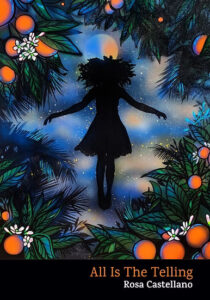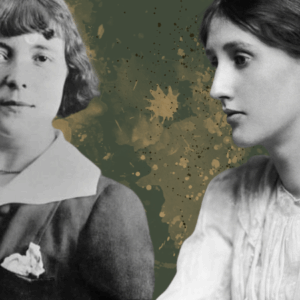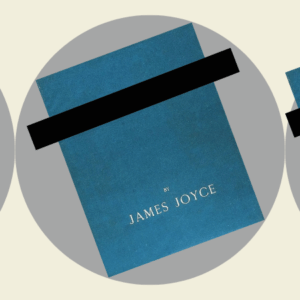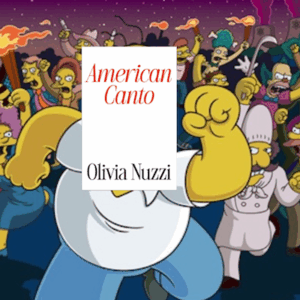
Asking Toni’s Questions: Decentering Whiteness in Literary Spaces
“It is the discomfort of asking and of making space for the answers...that will allow us to stay in the room together.”
The white woman standing in front of the fireplace with her laptop open struggles to read her piece. She has already shut the laptop once, but the audience—a group of writers, artists and composers in attendance at the Virginia Center for the Creative Arts—in what feels like a show of support, have encouraged her to keep going.
This is the halfway mark of my eleven-day residency at the VCCA, a beautiful space located in the foothills of the Blue Ridge Mountains that welcomes twenty-two creatives at a time to studio space, fellowship, and three provided meals a day.
At the front of the room, the author takes a long drink from her wine glass, sighs, and stops again.
Before beginning, she explained that sometimes she cannot finish reading this article aloud, at other times, she gets through it just fine. Which is sometimes how grief works but I can’t tell if this comment is intended as instructions for us, her audience—a hope that we listeners will get through it just fine with her, or if perhaps it is simply a reminder to herself.
As we witness her trying to subdue her body’s involuntary response to a previous trauma, I can’t help wondering why she didn’t offer a trigger warning.
The literary world seems to thrive in the tension that exists between the extremes of scarcity and abundance which elevate the individual over the collective.
For me, trigger warnings are more than the necessary announcement that the work being shared will explore a trauma that may cause a body to react negatively. They are how authors convey that they have considered the impact of their work on those attending a reading. Audiences deserve to know that the author is aware of the potential harm a poem or story can inflict and that they have thought about this and sought to mitigate the effect of any harm. It is a way authors show care but also respect for their audiences. Without it, I feel a little unsafe in her hands.
Respect for an audience or helping an audience feel safe might be the last thing on some authors or poets’ minds as we choose pieces for a reading. Often, we are looking to make an impact, to set ourselves apart. We writers are an ambitious lot. We have to be, to find success in an industry where the odds are so clearly stacked against us.
A lot of us writers have been in workshops and readings where a painful emotional trauma is recounted in a way that feels like trauma dumping but is rewarded with recognition and praise, perhaps for its risk-taking, or bravery, or perhaps because the majority of those in the room don’t know how to respond to a work when the author is dysregulated by their sharing of it.
When a writer does not consider or is not encouraged to consider the impact of what their work is describing, or when they seem to ignore or make assumptions about the inner lives of those listening, it can feel like a kind of self-centering, a privileging of point of view. And it’s this kind of moment, one that might not seem directly related to race, into which I most wish we could invite the questions Toni Morrison uses to open her book, Playing in the Dark. There she asks readers “what does positioning one’s writerly self, in the wholly racialized society that is the United States, as unraced and all others as raced, entail?”
Writers, more so than other professionals, require an awareness of their place in the racial hierarchy because writers recreate the world on the page. Even fantasy and science fiction works have built into their universes, the racial identity and stratification of their makers. And because white people are generally not encouraged to see themselves as racialized, they are free to opt out of the racial discourse taking place in any given moment. While those from global majority cannot.
What does it mean that white writers are essentially exempted from talking not only about the race of their characters but the racial stratification in those rooms we work so hard to inhabit. Those workshops, panels, agent meetings, conferences, fellowships and residencies—spaces in which those from the global majority are excited to show up, but unable to fully do so, or in some cases, do so and then are subjected to white subjectivity.
As I sit in my seat, listening to this author, the feeling in my body is one of alertness. Not just because of my relationship to the traumatic event she’s describing, or from wondering what will happen when she’s finished and it’s my turn to read. No, the feeling flooding me is most similar to a moment that occurred the previous night, when a white woman asked a Taiwanese artist to explain the Chinese symbols she was working with in her art and after receiving the artist’s answer, repeated her question, multiple times.
This casually racist moment made most of the people in the room, the majority of whom were white, uncomfortable. Afterwards it was clear from multiple conversations, that many had been wondering how to intervene without making it worse.
In an interview for Lit Hub, the poet Fred Moten said, “look: there are things you have to deal with, given the racial domination and racist denomination of the artworld, which is to say of the poetry world, to the extent that you have to be a part of this world even on a temporary or intermittent or unnaturalized basis.” Most of us understand this reality but it didn’t stop me from hoping that out in the wilds of Western Virginia, on the VCCA campus where deer and foxes and groundhogs are common sights and our studios offer safe havens—that we could, for our time away, take a break from the casual and overt racism that we encounter as BIPOC writers in this system founded on white supremacy.
As I prepared for my time away, I gave zero thoughts to dealing with whiteness. Which, as a BIPOC poet participating in the system of read, write, publish, attend residencies, try for fellowships, win a contest, publish a book—I should have known better.
Like many BIPOC folks, I have been the only person of color in a room, a workshop, a department. While working on my MFA in poetry, I was the recipient of an award meant to acknowledge the achievements of students of color and was the only student of color in the program in that year. There were no MFA faculty in my program who were women or people of color, but I stayed, believing that if I participated in the system, I would find success. Instead, I found confusion and an inability to fit a mold that was never meant for me.
Naively, I believed that at this residency, we artists and writers would engage with each other in a way that would allow us to push our work, our thinking to its limit, and grow. For me, when I can work on an idea collectively, or more simply, give an idea to a group, that idea, then has the chance to grow in collaboration past my individual imaginings. Alone, I can take an idea only so far, but collectively that limit changes, expands, so that being together at residencies can make for an environment with the potential to boost the work of all its participants forward.
But the literary world seems to thrive in the tension that exists between the extremes of scarcity and abundance which elevate the individual over the collective. So, at residencies and workshops, instead of investing in the communities we can make together, often, we are each working towards our individual success. Which for some of us involves impressing the group so that we can be invited back or making connections with folks who are further along and have more access. And if we writers are busy working towards our individual success in publishing then how are we taking care of our community?
Our ambition can fuel the motivation that our work requires. Most of us believe that we are making something necessary and for our work to find its audience, we participate in the highly competitive market of American publishing which unfortunately for our collective liberation, is predicated on the fallacy of individual talent. That an author’s voice and vision, are the result of a singular entity is supported by a whole industry of pay-to-play gatekeepers—those workshops, residencies, reviewers, teachers, agents and publishing professionals who protect and promote an industry characterized by promoting a hierarchical structure that in many ways works against the creation of art.
Writers are platformed as individuals, and rarely does the industry reflect the collective which makes the writing, the poems, and stories we tell possible.
Capitalism and individualism aren’t interested in what we can accomplish together. At this residency, where all I had to do was focus on was making work and being in community, I ended up making space for whiteness.
In her Me and White Supremacy workbook, Layla Saad defines white centering as “the centering of white people, white values, white norms and white feelings over everything and everyone else.” Most of our cohort was comprised of older white women, who probably didn’t view themselves or their comments as racialized. And so, I chose to absent myself from meals and conversations—at the time, I thought I was choosing to prioritize myself and my work, but looking back, I realize that by leaving the room I was allowing voices from the dominant group to dominate.
This is a learned behavior, a survival mechanism used to navigate the intersection of my racialized identity and my ambition as writer from the non-dominant group and one I have to work to stay conscious of.
I can’t help but wonder, if the responsibility for the conversations that must come next, belongs to the participants and not to the organizers.
Five days into this residency, a new writer arrived, took one look around and was like wow, lots of white people. She had spoken to another resident before he left, who’d said that he’d been the recipient of racist comments and had stopped coming to lunch and breakfast, came late to dinner in order to avoid conversations with some of the older white women present.
I had witnessed his absence and thought that he was choosing to be alone because he wanted to get work done—the very lie I was telling myself and I totally missed the reality of what was happening to him. Instead of seizing an opportunity to create solidarity with this person I’d like to call a friend, we were both lonely and missed a chance to make a space for and to center each other and our work.
Octavia Butler suggests in her books that the survival of the individual is tied to the commitment and care of the community—and in 2025 that feels more true than it ever has. But how can we writers be and stay in community with one another if we cannot participate in a dialogue about the way our racial and intersectional identities effect our literary spaces.
At the front of the room, the author has shut her laptop. She will not continue.
The feeling in the room is one of uncertainty, of how to proceed. But also, there’s a sense of emotional wariness. We listeners have been given an emotional load to hold without being asked if we’re comfortable holding it and I can’t help wondering if the audience would tolerate this level of discomfort, if the speaker wasn’t white.
But I can’t ask that question. I can’t bring race into the room even though it’s already there. It’s present without me or any of the other people of color in the room. And yet, we are not equipped to have conversations about our writing or about any aspect of publishing or our literary lives where it intersects with race even though the folks organizing the residency have worked to create a diverse group, to put us all in a room together.
I can’t help but wonder, if the responsibility for the conversations that must come next, belongs to the participants and not to the organizers.
I wish everyone would have had to have read Toni Morrison’s book ahead of this residency, because her questions make possible the dialogues we need to have in order to really be in community with one another. When she asks, “What happens to the writerly imagination of a black author who is at some level always conscious of representing one’s own race to, or in spite of, a race of readers that understands itself to be “universal” or race free?” She is speaking for me.
I want to ask that question into the room of this residency and to offer Morrison’s follow up, “how is “literary whiteness” and “literary blackness” made and what is the consequence of that construction?”
The answers will undoubtedly be uneasy; but it is the discomfort of asking and of making space for the answers—of acknowledging that we have considered the impact of our words on our audience, on each other, that will allow us to stay in the room together.
__________________________________

All Is the Telling by Rosa Castellano is available from Diode Editions.
Rosa Castellano
Originally from Tampa, Fl, Rosa Castellano is a poet and teacher living in Richmond, VA. She has an MFA from VCU and her debut poetry collection, All Is the Telling, will be out this Spring from Diode editions.



















